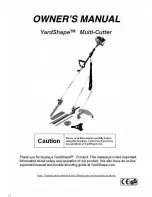
Marine Installation Manual
2022-03
4-69
4 Ancillary Systems
4.7 Fuel oil system
X62DF-S2.0
Feed pump — Low-pressure fuel oil
Formula for delivery
gauge pressure
p
v
+ 1 +
p
1
+
p
2
[bar]
where:
p
v
.............. = water vapour gauge pressure at the required system temp. [bar]
(see viscosity-temperature diagram in section
)
p
1
........... = max. pressure losses between feed pumps and mixing unit [bar]
p
2
........... = max. pressure change difference across the pressure regulating
valve of the feed system between min. and max. flow
(see
)
Example
HFO of 700 cSt at 50°C, required system temperature 145 °C:
p
v
.............. = 3.2bar
p
1
........... = 0.5 bar
p
2
........... = 0.6bar
Delivery gauge pressure =
3.2 + 1 + 0.5 + 0.6 =
5.3 bar
Type
Positive displacement screw pump with built-in safety valve
Capacity
According to
: The capacity is to be within a tolerance of 0 to
+20% of the GTD value, plus back-flushing flow of automatic self-
cleaning filter, if such filter is installed.
Delivery pressure
The feed pump must provide a required pressure in the downstream
mixing unit to prevent water in the system from vaporising into
steam. The pump, whilst considering system pressure drop, must
provide a minimum of 1bar above the water vapour pressure and al
-
ways be above a 3bar value. The water vapour pressure is a result
of the system temperature and pressure for a given fuel type.
Heavier oils need more heat and higher temperatures to maintain
them at the correct viscosity compared to lighter oils.
(Refer to the formula and example below.)
Electric motor
The electric motor driving the fuel oil feed pump must be sized for
the maximum pressure head (difference between inlet and outlet
pressure), maximum fuel oil viscosity (100cSt), and the maximum
required flow.
Working temp.
Below 100°C
Fuel oil viscosity
Depending on the fuel oil system’s heat control, viscosity at working
temperature will often differ. It will not be more than 100cSt, how
-
ever can be considerably less (as low as 2cSt with lower viscosity
fuel like MDO/MGO or possibly LSHFO, see viscosity-temperature
diagram -
).
The manufacturer's specification must comply with the fuel viscosity
range. For system options with additional temperature regulation,
see
















































